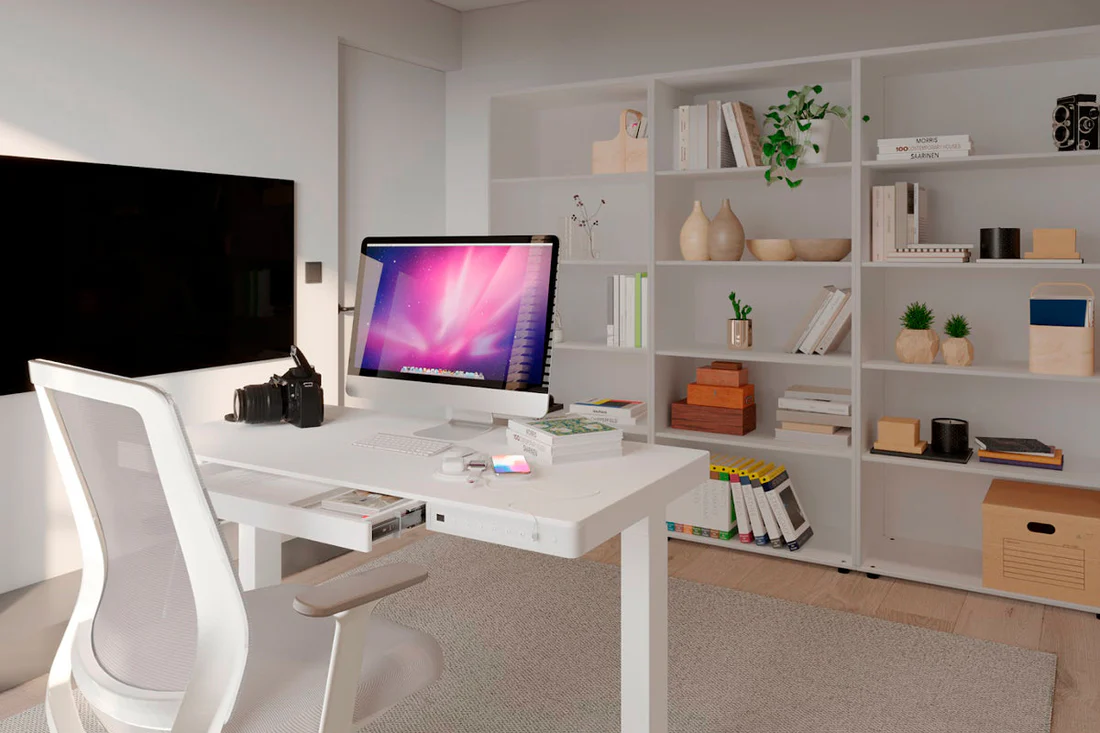Are Sit-Stand Desks Good For You?


In recent years, sit-stand desks have gained popularity as a potential solution to the health risks associated with prolonged sitting. These desks allow users to alternate between sitting and standing throughout the workday, promoting movement and reducing sedentary behavior.
However, the question remains: Are sit-stand desks genuinely beneficial for your health and well-being?
In this comprehensive guide, we'll explore the potential benefits and drawbacks of standing desks to help you make an informed decision about incorporating them into your workspace.
Understanding the Benefits
1. Reduced Sedentary Behavior
Prolonged sitting has been linked to various health concerns, including obesity, cardiovascular disease, and musculoskeletal issues. Office standing desks offer an alternative to prolonged sitting by allowing users to stand periodically throughout the day, reducing sedentary behavior and promoting movement.
2. Improved Posture and Comfort
Standing periodically can help alleviate pressure on the spine and promote better posture. Sit-stand desks often feature adjustable height settings, allowing users to customize the desk to their preferred standing height, reducing strain on the neck, shoulders, and lower back.
3. Increased Energy and Productivity
Some users report feeling more energized and focused when using a height adjustable office desk, as standing can help increase blood flow and circulation, leading to improved alertness and productivity. Alternating between sitting and standing may also prevent fatigue and alleviate afternoon slumps.
Considering the Drawbacks
1. Potential Discomfort
While standing offers benefits for some individuals, prolonged standing can lead to discomfort, fatigue, and lower limb issues. It's essential to listen to your body and alternate between sitting and standing to avoid overexertion and discomfort.
2. Transition Period
Adjusting to a sit-stand desk may require a transition period as your body acclimates to the new workstation setup. Some users may experience muscle soreness or fatigue during the initial adjustment period, but these symptoms typically subside over time as the body adapts.
3. Cost Considerations
Sit-stand desks can be more expensive than traditional desks, making them a significant investment for individuals or organizations. Before purchasing a sit-stand desk, consider your budget and whether the potential health benefits justify the cost.
Making the Most of Your Sit-Stand Desk
1. Alternate Between Sitting and Standing
To maximize the benefits of a sit-stand desk, aim to alternate between sitting and standing throughout the workday. Start by standing for short periods, gradually increasing the duration as your body adjusts. Listen to your body's cues and switch positions as needed to maintain comfort and productivity.
2. Incorporate Movement Breaks
In addition to using a sit-stand desk, incorporate regular movement breaks into your work routine. Take short walks, stretch, or perform gentle exercises to promote blood flow, reduce muscle tension, and break up prolonged periods of sitting or standing.
3. Customize Your Setup
Adjust your sit-stand desk to suit your ergonomic needs and preferences. Ensure that your monitor is at eye level, your keyboard and mouse are at a comfortable height, and your feet are supported when standing. Experiment with different standing positions and footrests to find what works best for you.
Sit-stand desks offer a potential solution to the health risks associated with prolonged sitting, promoting movement, reducing sedentary behavior, and improving posture. However, they may not be suitable for everyone, and there are potential drawbacks to consider, including discomfort, transition periods, and cost considerations.
By understanding the benefits and drawbacks of sit-stand desks and making adjustments to your workstation setup and work habits, you can make the most of this ergonomic solution and promote your health and well-being in the workplace.
